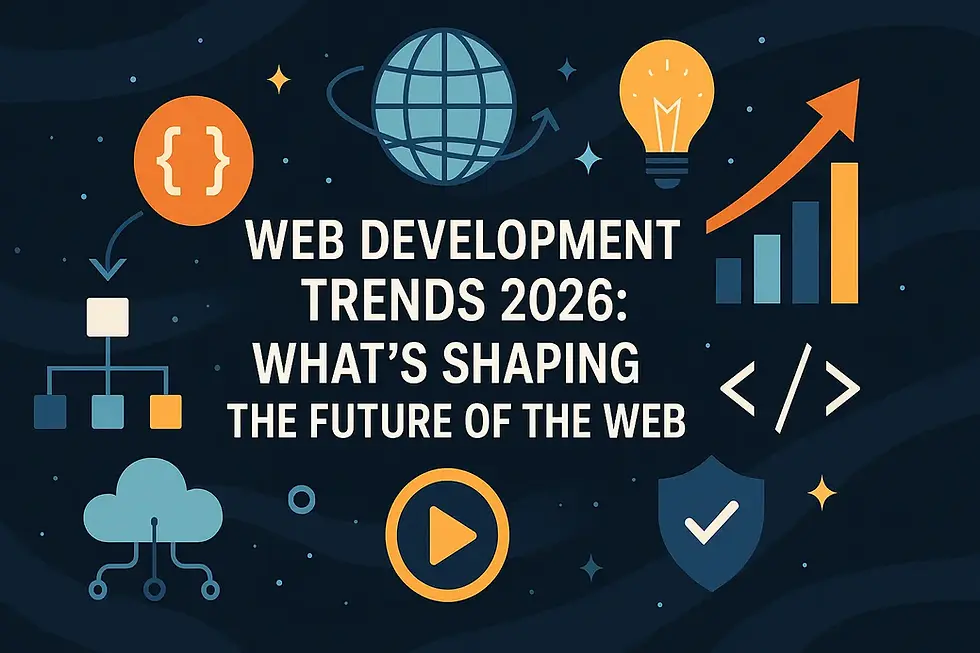Advertising in AI Mode: Predictions on How It Will Work
- Davydov Consulting

- Jul 8
- 6 min read

Artificial intelligence is transforming every facet of our digital lives, and advertising is no exception. The emergence of what is being called “AI Mode” marks a potential revolution in how users experience content and interact with brands online. This mode leverages advanced AI algorithms to create deeply personalised, real-time experiences tailored to individual preferences and contexts. As a result, the delivery of advertisements will no longer be a one-size-fits-all approach but a dynamic and adaptive process. This article explores the nature of AI Mode, how advertising will evolve within it, and what marketers need to know to prepare for this significant shift.
What is AI Mode?

Google AI Mode allows users to ask complex, multi-part questions and receive comprehensive, AI-generated answers that synthesize information from various online sources. Unlike standard search results, which primarily display a list of links, AI Mode delivers nuanced summaries, supports follow-up questions, and offers direct access to relevant content.
The feature utilizes Google's Gemini 2.5 model, which supports multimodal inputs—including text, images, and voice—and employs advanced reasoning techniques to provide more accurate and context-aware responses.
Key Features
Conversational Interaction: Engage in back-and-forth dialogues with the AI to refine answers and explore topics in depth.
Deep Search: AI Mode can issue multiple related searches concurrently across subtopics and data sources, offering a more thorough exploration of complex queries.
Multimodal Inputs: Submit questions using text, voice, or images to receive tailored responses.
Personalization: With user consent, AI Mode can access past search history and, in some cases, Gmail data to provide more relevant and personalized answers.
Integrated Tools: Features like Project Mariner enable AI Mode to perform tasks such as booking tickets or making reservations on your behalf.
Why Advertising in AI Mode Will Be Different

From Passive to Predictive Advertising - Traditional ads often rely on broad targeting or user-declared interests, making advertising mostly passive. In AI Mode, ads will shift toward predictive delivery, where AI anticipates user needs, moods, and context in real time to serve highly relevant ads before users explicitly seek them.
Deep Personalisation Based on Real-Time Data - AI Mode can analyse not only demographics but also tone, emotional state, location, current activities, and even micro-moments. This enables hyper-personalised ads tailored dynamically, increasing engagement and effectiveness.
Seamless Integration into User Experience - Ads won’t appear as obvious banners or pop-ups but will blend natively into AI-driven interfaces like chatbots, voice assistants, or immersive AR/VR environments. This reduces ad fatigue and improves user receptiveness.
Contextual and Behavioural Adaptivity - Unlike static ads, AI Mode advertising adapts continuously to changing user behaviour and environmental context, such as weather, calendar events, or ongoing conversations, making ads timely and meaningful.
Privacy-Aware yet Intelligent Targeting - While AI Mode leverages rich data, it will need to respect privacy frameworks like GDPR. Advances in federated learning and on-device processing can enable targeted advertising without compromising user data security.
Predictions: How Advertising in AI Mode Will Work

Hyper-Personalized Ad Delivery
Google AI Mode will analyse users' tone, emotions, behaviour, and context in real time to deliver ads that are highly tailored. Ads will adapt dynamically to users’ mood, location, schedule, and even current goals, making the advertising experience feel personal and relevant. Large language models (LLMs) like ChatGPT will help craft ad content that resonates with each individual, creating more engaging messaging. This real-time behavioural data will enable advertisers to predict user needs and preferences before explicit searches or actions. The result will be an ad ecosystem that is less intrusive and more contextually appropriate.
Seamless Native Integration
Ads will no longer appear as obvious banners, pop-ups, or separate placements. Instead, AI Mode will blend ads smoothly into the user interface and content, making them feel like natural parts of the user experience. For example, ads might be embedded within conversational AI interactions or personalized content streams without disrupting flow. This native integration reduces user annoyance and increases engagement rates, as ads are seen as helpful recommendations rather than interruptions. The ad content will adjust fluidly based on ongoing user interactions and feedback.
Predictive and Proactive Advertising
Instead of simply reacting to user searches or clicks, AI Mode will proactively anticipate what users might need or want next. By analysing patterns, past behaviour, and contextual cues, AI will deliver ads just ahead of the user’s intent, creating a predictive marketing environment. This could involve suggesting products or services before the user explicitly expresses interest, making advertising more efficient and timely. Predictive ads will leverage multi-modal data including voice, gestures, and environmental factors.
Privacy-Centric and Transparent Targeting
AI Mode will require advanced privacy safeguards, giving users more control and transparency over how their data is used for advertising. Users may be able to customise the level of personalisation they allow and see why particular ads are shown. This transparency will build trust and comply with regulations like GDPR. AI will anonymise and aggregate data where possible, ensuring targeted advertising respects privacy without sacrificing relevance.
Multi-Channel and Cross-Device Synchronisation
Advertising in AI Mode will seamlessly operate across devices and channels, maintaining consistent messaging and timing. Whether users are on mobile, desktop, voice assistants, or AR/VR environments, AI-driven ads will adapt to the format and context. This unified experience ensures that ad campaigns remain coherent and effective regardless of the user’s preferred device or interaction mode. Real-time syncing of preferences and behaviours will enhance ad continuity.
Conversational and Interactive Ads
AI Mode will enable ads to become interactive dialogues rather than static messages. Users can engage directly with AI-powered ads via chat, voice, or gestures, asking questions, customising offers, or requesting demonstrations. This two-way interaction will improve user engagement and provide richer data for advertisers to refine targeting and messaging. Conversational ads will feel less like sales pitches and more like personalised customer service.
Dynamic Content Creation and Testing
Using generative AI, ads will be dynamically created and optimised on the fly. AI will test different creative variations, formats, and calls to action in real time, selecting those with the best performance for each user segment. This agility will reduce wasted ad spend and improve ROI. Marketers will gain deeper insights from AI-generated analytics about what content resonates best with specific audiences.
Potential Challenges and Ethical Considerations

Excessive personalisation risks creating discomfort or a “creepy” ad experience that alienates users.
Large-scale data use heightens risks of misuse, surveillance, and privacy breaches.
Transparency about AI decision-making processes is critical to maintain user trust.
Explainable AI techniques will help clarify why certain ads are shown.
Balancing innovation with ethical responsibility will be a key challenge for platforms and marketers.
Despite its many advantages, advertising in AI Mode raises important challenges and ethical questions that require careful management. Over-personalisation risks creating uncomfortable or “creepy” user experiences that could lead to disengagement or distrust. Additionally, the vast amounts of data required for AI-driven advertising increase the potential for misuse or excessive surveillance if not properly regulated. Transparency around how AI algorithms operate and make decisions will be crucial to foster trust and accountability. The development and deployment of explainable AI systems that clarify ad targeting logic will help platforms meet ethical standards and user expectations.
What Brands and Marketers Should Prepare For

Marketers must adopt AI-first strategies and continuously test AI-driven ad approaches.
Ethical data collection and clear communication about ad personalisation should be priorities.
Investment in conversational and immersive content such as voice-activated ads and AR experiences is essential.
SEO, PPC, and content marketing will need to adapt to AI-driven, predictive user behaviour models.
Brands that anticipate and embrace these changes will be better positioned to succeed in the AI Mode era.
To thrive in the era of AI Mode advertising, brands and marketers must adopt forward-thinking, AI-centric strategies and continually test innovative approaches. Ethical data collection and transparent communication with consumers should be prioritised to build lasting trust. Investment in conversational marketing and immersive content, such as AR and voice-enabled ads, will be necessary to engage users effectively within AI-driven environments. Moreover, SEO, pay-per-click (PPC), and content marketing strategies will need to evolve to accommodate the predictive and dynamic nature of AI Mode. Organisations that anticipate these changes and adapt accordingly will be well-positioned to lead in the new advertising landscape.
Final verdict
Advertising in Google AI Mode represents a pivotal shift from conventional marketing models to highly personalised, predictive, and ethically responsible engagement. By leveraging real-time AI insights and immersive technologies, brands can create meaningful connections that resonate deeply with consumers. While challenges remain around privacy, transparency, and user comfort, the potential benefits of AI Mode advertising are substantial. Success will require brands to embrace AI thoughtfully, prioritising ethical considerations alongside innovation. Those that do will unlock powerful new avenues for growth and customer loyalty in an increasingly intelligent digital world.




Comments